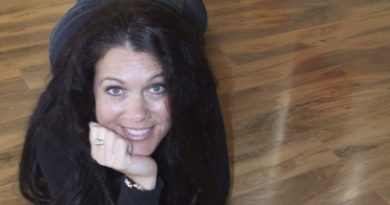Rhinovirus wave set to hit this fall
By Sari Huhtala
PCR testing of children in the late 80s found that 8.9 per cent of children tested positive for COVID. You likely had coronavirus, which causes common colds, at one point in your life, since it’s been around for over 50 years. But a greater concern for this fall’s cold and flu season is rhinovirus. Rhinovirus causes 80 per cent of colds and flu in the fall, along with pneumonia and bronchial problems, studies show.
Both human rhinovirus (HRV) and coronavirus (HCoV) are linked to the common cold and lower respiratory tract illness (pneumonia), according to a 2016 review in the American Journal of Respiratory and Critical Care Medicine. In fact, 50 per cent of common colds are caused by these two viruses.
A study cited in the 2016 review found, among hospitalized patients, 5.7 per cent had coronaviruses. The 47 different coronaviruses were responsible for 10.5 per cent of all the respiratory viral infections. Epidemiological studies show that COVID outbreaks occur every two to three years, and “reinfections are common,” according to the review.
In fact, PCR testing of children in the late 80s found that 8.9 per cent of children under age two tested positive for COVID, according to a 2009 study entitled, The pediatric burden of human coronaviruses evaluated for 20 years. For 20 years, researchers followed a “large cohort of healthy children” who tested positive for COVID. They found that 51 per cent had been diagnosed with an acute ear infection. None of the children who tested positive for COVID were hospitalized. Of the upper respiratory tract infections (common cold) samples tested over the 20-year period, 4.7 per cent of the common cold was found to be attributed to COVID.
Testing positive for COVID in the 1980s could result in positive PCR test results at present, as the PCR test will detect genetic material, scientists say.
“The PCR assay may detect viral transcripts from viral sequences stably integrated into the genome rather than infectious virus,” scientists involved in an in-depth study entitled SARS-CoV-2 RNA reverse-transcribed and integrated into the human genome, conclude.
A 2004 study in the European Journal of International Medicine found that rhinovirus (HRV) accounts for 30 to 50 per cent of common colds, while COVID accounts for 10 to 15 per cent of common colds.
HRV viruses, with over 100 identified, are “the most common cause of upper respiratory tract infections in all age groups,” scientists in the study found, noting each fall season 80 per cent of the infections are due to HRV, which was discovered 1956. HRV infection in asthmatic children and adults can lead to severe, and longer-lasting pneumonia symptoms. About 9.5 per cent of Canadians have asthma, according to the Lung Association.
Influenza virus accounts for approximately five to 15 per cent of common colds, while respiratory syncytial virus (RSV) accounts for five per cent. By the age of two, 95 per cent of children will have been infected by RSV, and reinfection is likely, scientists say.
One study, Rhinovirus Outbreaks in Long-term Care Facilities, Ontario, Canada, reported, of the 297 respiratory disease outbreaks in 2009 in Ontario’s long-term care facilities, H1N1 and parainfluenza-1 virus represented seven per cent and six per cent, respectively, while 59 per cent of the pathogens were found to be HRV.
A “major cause of death among elderly people”, particularly those in long-term care, is respiratory tract illness, according to the 2016 review in the American Journal of Respiratory and Critical Care Medicine. A 2002 study in the Journal of Infectious Diseases found that HRV causes community acquired pneumonia, and in the case of respiratory infections among immunocompromised patients, HRV is the most common virus detected.
Photo credit: ©[m-gucci] via Canva
Sari Huhtala is the publisher and editor of Alive and Fit Magazine. She has over 25 years experience in journalism, and over 15 years as a certified personal trainer and fitness specialist, as well as over 20 years as a wellness advocate.




